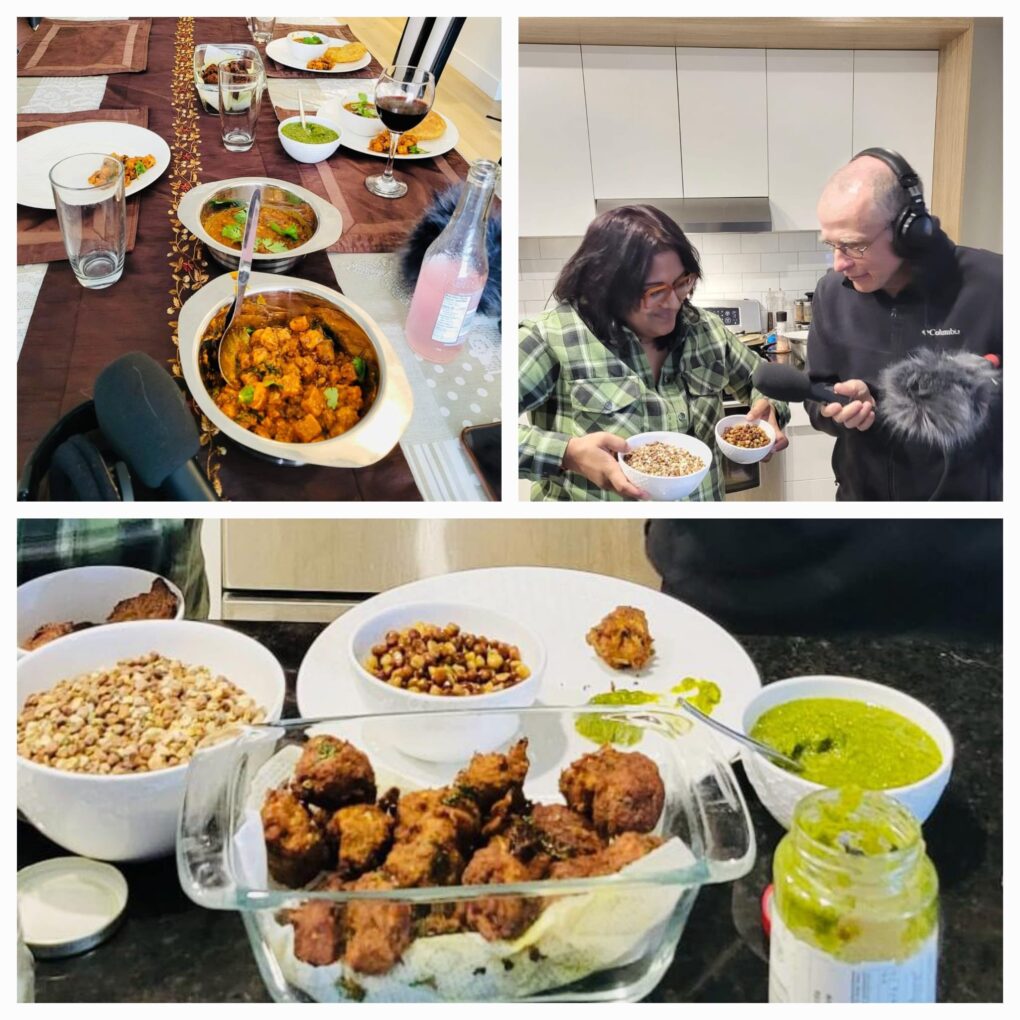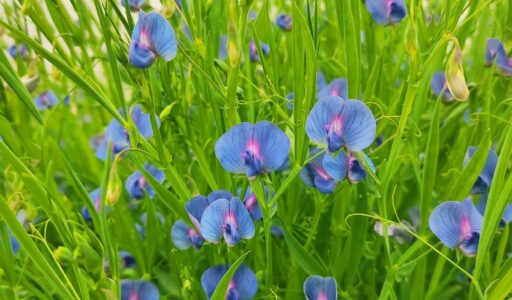By Dr. Priyanka Gupta
Recently, I had the pleasure of preparing some traditional Indian dishes using grasspea, and the results were a hit with everyone who tried them. The occasion was the visit of Mr. Conrad Fox, a freelance journalist from Studio Canek, working on a podcast for the Crop Trust, and his wife, Mrs. Rosa Fox, to Quebec City. They were particularly impressed by the unique flavors and versatility of grasspea in dishes like pakoras and dal.
At first, I was a bit apprehensive about cooking with grasspea. It is similar to other legumes but is usually used as an additive to other flours, not a main ingredient, partly due to the stigma related to its toxin (ODAP content). However, it turned out to be super easy and healthy. Grasspea, a legume known for its climate resilience and high protein content, can be used similarly to other pulses.
The grasspea pakoras, made with whole grains and fresh herbs, were deep-fried to perfection, with a crispy brown exterior and a soft, green interior. Pakoras are savory snacks originating from the Indian subcontinent, deep-fried and made with a variety of ingredients, typically served with chutney. In addition to the pakoras as appetizers, grasspeas also excel in Indian main dishes like dal. I also prepared traditional Indian dal using grasspea, following the same recipe my mother taught me for pigeon pea dal (Arhar ki dal). Dal is a staple Indian dish made from pulses such as lentils, pigeon pea, mung bean, chickpea, urad bean, and more, cooked with spices to create a thick, hearty stew. These dishes were warmly received, showcasing the versatility and flavor of grasspea in both Indian and Canadian cuisine. The pakoras were crispy and flavorful, while the dal was hearty and comforting, making them perfect for any occasion.
The whole idea was to share the experience of Canadians trying grasspea for the first time. My colleagues at Université Laval were all delighted with the dal, calling it “incredibly flavorful” and “superbly delicious.” Personally, my mother-in-law, Frida, who is Haitian-Canadian, loved the pakoras, and my Canadian husband Randy, who tried both the dal and pakoras, said they were tastier than any other legumes and pakoras/dal he had tried.
Conrad and Rosa were so impressed by the grasspea dishes that they inquired about obtaining seeds. After discussing the benefits and uses of grasspea, which include its high protein content, fiber, and adaptability to various cuisines, I shared some seeds from my trials at Université Laval, where we grow grasspea for research in collaboration with ICARDA. Conrad recorded our conversation and tasting session, capturing the sounds of the boiling pot, the bubbling oil, and even the playful cooing of my 6-month-old baby in the background. This added a humorous and lively touch to the experience, capturing the enthusiasm around the table for this nutritious and versatile legume, and sparking conversations about everything from parenting to travel.
The success of this meal demonstrated grasspea’s potential as a protein-rich, fiber-packed, and healthy alternative to more commonly used legumes. Grasspea’s adaptability to different cuisines and its delicious taste make it a great addition to any diet. Grasspea delights from India to Canada truly show how this legume can bridge culinary traditions across continents. Apart from being known for its climate-resilient properties, grasspea also stands out for its taste and health benefits.
In conclusion, whether you’re in Quebec, Canada, or anywhere else, grasspea offers a delicious and nutritious way to enjoy traditional dishes with a modern twist. So, why not give it a try in your kitchen today? If you are interested in obtaining seeds, this year Université Laval and Semican are growing grasspea originally sent by ICARDA. Contact us for grasspea seeds.

International Lathyrus Day
Join us in celebrating the inaugural International Lathyrus Day on June 3, 2024, in Ghent, Belgium. This event honors Fernand Lambein’s dedicated work and promotes research on Grasspea (Lathyrus sativus). Let’s join hands to make a significant impact on the future of this vital crop.
About our guest author

This blog was penned by Dr. Priyanka Gupta, a Postdoctoral Fellow at the Université Laval and CÉROM (Grain Research Center) in Quebec, Canada. Edited by Mr. Conrad Fox. Follow Priyanka and Conrad @VidhiPriyaka and @StudioCanek. Special thanks to Mrs. Manek for her delicious chutney and Dr. Barpete for sharing the pakora recipe. Heartfelt gratitude to Prof. Belzile and Dr. Agrawal for their unwavering support in bringing grasspea from ICARDA to Quebec.



Just reading of this magnificent meal you prepared sounds delicious.
Can’t wait to try some.
Keep up the good work Priyanka
Hi Priyanka..I still remember the time when you joined our lab as masters trainee..I saw a spark in your eyes to do things in a better way… always saw you working hard and now happy to see your progress…stay blessed..and keep doing good..!!